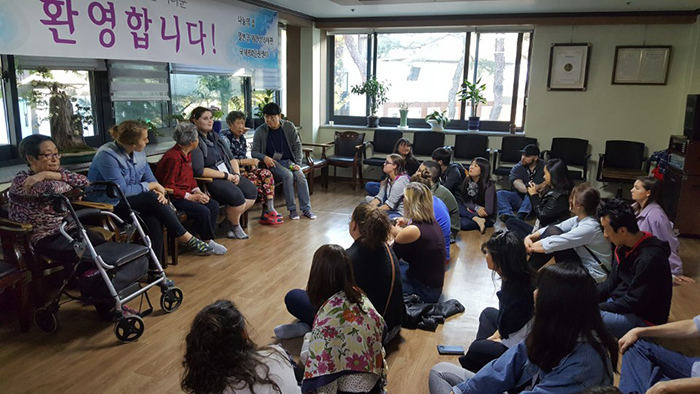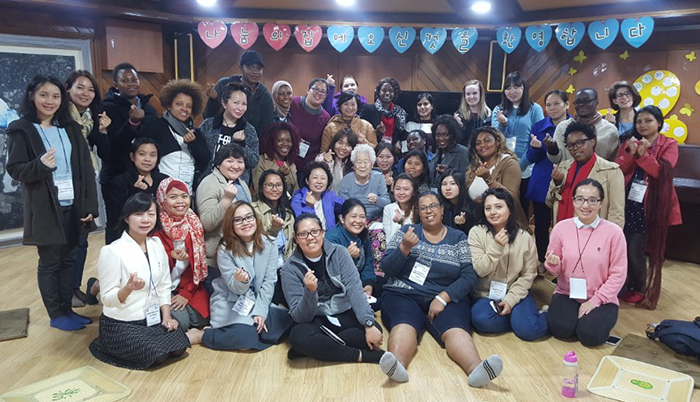
Non-Korean visitors engage in a conversation with victims of colonial sexual slavery, at the House of Sharing, a shelter for the victims, in Gwangju, Gyeonggi-do Province, in October.
By Min Yea-Ji and Kim Young Shin
Photos = House of Sharing
“Halmoni Korean grandmothers are unimaginably courageous. We will make sure their stories live on and that the demand never ends. Please keep up your hard work.”
So said Margaret Sun, a U.S. visitor, in July after her tour of the House of Sharing, a shelter for the victims of sexual slavery policies in Korea during colonial times and World War II.
Since 2009, the House of Sharing has hosted a tour of its museum in English and in Japanese for non-Korean visitors. About 1,000 visitors register for the program every year.
The Statue of Peace, a symbol of the women who suffered as sexual slaves during colonial times and World War Ⅱ, has been erected in many places around the world, and has drawn the international society’s attention to the victims and the Imperial Japanese colonial policies under which they suffered. A steady number of non-Korean tourists visit the House of Sharing every year.
The museum tour -- in Korean and Japanese -- comprises of the history museum, a session for questions and answers, a discussion session, and meetings with some of the surviving victims. Here, the visitors can learn about the history of Imperial Japan's sexual slavery policies, the current status of the surviving victims, and the responses of today's Japanese governments. They can also hear first-hand the thoughts and wishes of the surviving victims.
Nora Roders, a German tourist who visited the shelter, said, “I was deeply moved. The tour was very informative, a combination of historical fact and personal insight, which made the experience unforgettable. It reminded me of how important it is to fight for human rights.”

Participants in the English-language House of Sharing tour pose for a photo with some of the surviving victims, at the shelter in October.
“The tours will become richer as the exhibition hall of relics and the memorials open in January,” said an official from the House of Sharing. “In the new exhibition hall, relics of the victims and some of their drawings, which couldn't fit in the smaller space we used to have, will be on display, so visitors will be able to relate to the pain the victims felt at that time, and their 30-plus years of fighting for human rights and for a proper historical record.”
Details about museum tours in English and Japanese are available at the link below.
http://www.nanum.org/eng/sub4/sub3.php